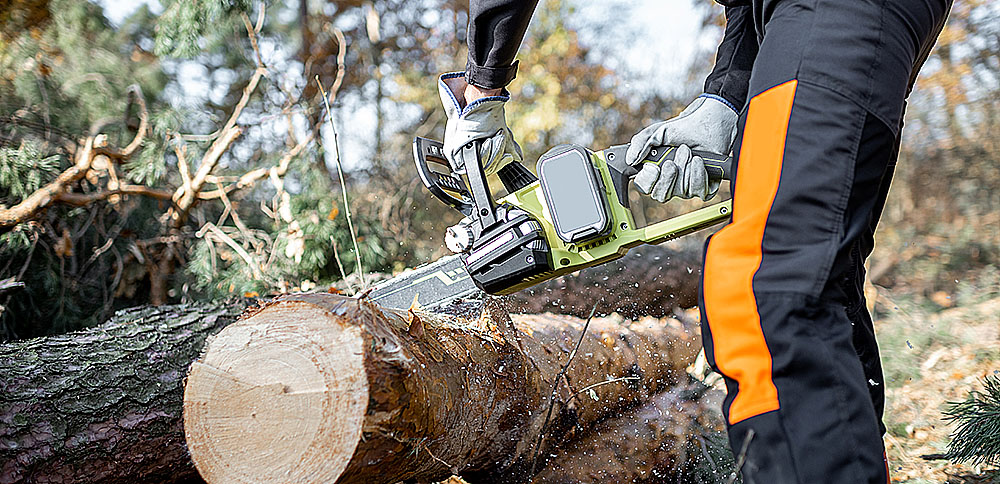The shock of seeing a massive tree suddenly blocking your driveway or crushing your roof can leave you feeling overwhelmed and unsure where to start. Your first priority is always ensuring everyone’s safety, then assessing the damage, and finally beginning the cleanup and recovery process. Professional tree removal services become essential in these situations because fallen trees often involve dangerous conditions that homeowners should not attempt to handle alone.
Heavy branches under tension can spring back violently when cut, damaged trees near power lines create electrocution hazards, and unstable trunks can shift unexpectedly during removal. Understanding the proper steps to take immediately after a tree falls helps you protect your family, minimize property damage, and navigate the insurance claims process smoothly. This guide walks you through everything you need to know when facing this stressful situation, from those first critical moments through complete cleanup and prevention of future incidents.
Taking Immediate Safety Measures
The moment you discover a fallen tree, your first action must be ensuring no one is in immediate danger. If the tree has struck your house, carefully check that all family members are safe and accounted for. Do not enter any rooms where the tree has penetrated the roof or walls, as structural damage may have weakened floors and ceilings. If anyone is trapped or injured, call 911 immediately before doing anything else. Look carefully for downed power lines around or on the fallen tree. Power lines can remain energized even when they appear dead, and touching a tree in contact with live wires can be fatal. Stay at least 30 feet away from any downed lines and call your power company right away to report the hazard. They will send crews to disconnect power and make the area safe before any tree work can begin. If the fallen tree is blocking your only exit from the property and you need to leave for safety reasons, do not attempt to move it yourself.
Contact emergency tree services for assistance in creating a safe exit route. Severe weather that caused the tree to fall may have created other hazards around your property. Check for gas leaks by smell or sound, as a tree can rupture gas lines when it falls. If you detect gas, evacuate immediately and call the gas company from a safe distance. Take photos of the damage from multiple angles once you have confirmed everyone is safe. This photographic evidence becomes crucial for insurance claims and helps tree removal professionals understand the situation before they arrive. Document the tree’s position, any property damage, and the overall scene while being careful not to put yourself at risk to get better pictures.
Contacting Your Insurance Company
Once immediate safety concerns are addressed, contact your homeowner’s insurance company as soon as possible. Most policies cover tree removal when a tree falls and damages a structure, fence, or other covered property. However, coverage typically does not extend to removing fallen trees that did not cause any damage. Your insurance agent will guide you through their specific claims process and let you know what documentation they need. Ask explicitly whether your policy covers emergency tree removal costs and if they require you to get multiple estimates before proceeding. Some policies include provisions for immediate emergency services to prevent further damage, such as tarping a damaged roof or cutting trees that threatens to cause additional harm. The insurance company may send an adjuster to inspect the damage before authorizing work, but in genuine emergency situations where delays could worsen the damage, you may be authorized to proceed immediately.
Keep detailed records of all communication with your insurance company, including names, dates, times, and what was discussed. Save all receipts related to the incident, including hotel costs if you need temporary housing, emergency repairs, and tree removal expenses. Understanding your deductible and coverage limits helps set realistic expectations about out-of-pocket costs. Many homeowners discover too late that their coverage for tree removal is capped at a specific dollar amount, often between 500 and 1500 dollars per tree.
Hiring Emergency Tree Removal Professionals Safely
Finding qualified tree removal professionals during an emergency requires balancing speed with caution. Storms that cause widespread tree damage often bring out unlicensed contractors and scammers looking to take advantage of desperate property owners. Start by asking neighbors and friends for recommendations if they have used tree services before. Your insurance company may also provide a list of approved contractors, though you are not typically required to use only those companies. When contacting tree services, verify they carry proper liability insurance and workers compensation coverage. A legitimate company will provide proof of insurance without hesitation. Ask about their experience with emergency removals and how quickly they can respond to your situation.
Request written estimates that detail exactly what work will be performed and what is included in the price. Emergency tree cutting services Kensington typically cost more than routine tree work because of the urgency, difficulty, and risks involved. Expect to pay premium rates for immediate response, especially if the work needs to happen outside normal business hours or during high-demand periods following major storms. A fallen tree often requires specialized equipment like cranes to safely remove heavy sections without causing additional damage. Make sure the company you hire has access to appropriate equipment and expertise for your specific situation. Get a clear timeline for when work will begin and how long the job will take to complete. Trees on houses may require staged removal over several days to safely extract branches and trunk sections without worsening structural damage.
Understanding the Removal Process
Professional tree removal from structures requires careful planning and execution. The crew will typically start by removing smaller branches and working their way toward larger limbs and the trunk. They may need to use ropes and rigging systems to control how pieces come down, preventing further damage to your property. If the tree has penetrated your roof, they will often stabilize the structure before beginning removal to prevent collapse.
Your insurance adjuster needs to see the damage before permanent repairs begin, but temporary protective measures are usually approved immediately. Document everything you do with photos and receipts. The time between tree removal and permanent repairs can stretch into weeks or even months depending on contractor availability and the extent of damage. During this period, monitor the temporary repairs regularly and make adjustments as needed. Heavy rain or severe weather can displace tarps or damage temporary patches. Keep your insurance company updated if new problems develop or if you discover additional damage that was not apparent initially. The removal process often reveals hidden damage to gutters, fascia, shingles, or siding that was not visible with the tree in place.
Final Thoughts
Pay attention to changes in your trees over time. Sudden lean, large cracks in the trunk, fungal growth, or significant branch dieback all signal potential problems. After major storms, inspect trees for new damage even if they did not fall. Cracks, splits, or loosened root systems can make trees vulnerable to failure in the next weather event. Working with reputable tree removal companies Chevy Chase for regular maintenance costs much less than dealing with emergency removals and property damage. Investing in preventive care protects your home investment and provides peace of mind that your trees are healthy and stable for years to come.


